What is #OccupyWallSt? Who are the 1%? Why did it take the media so long to report on it? What do protestor’s want? Are they trying to bring down The Pyramid? Will they succeed?
I am teaching a class on the Philosophy of War and Peace in North Carolina, with a specific focus on the Arab Spring. Yet here in America I might be witnessing the greatest revolution of them all: the “OccupyWallSt” movement, and its children.
When I showed RapNews to students a few weeks ago, I had no idea that it would become prophetically true:
[youtube]http://www.youtube.com/watch?v=DdAVl1LvQL0[/youtube]
People have been camping out in Zuccotti Park (formerly “Liberty Plaza Park”) for almost a month, and yet the media in America only started reporting on it just over a week ago. Why?
What is “OccupyWallSt”?
OccupyWallSt (and OccupyChicago, OccupySydney, OccupySeasameSt etc) are peaceful protests against the foothold that corporations have over the state of global affairs including economic injustices, environmental destruction, providing weapons to both sides of wars, controlling the media and making politicians their puppets.
Like the Arab Spring, the demonstrations don’t have a leader. It began with 1000 people walking down the street,and 100-200 sleeping in the park. The idea was originally proposed in an Adbusters (an advertisement-free, anti-consumerist Canadian magazine), who suggested protesting against the lack of holding Wall St responsible for their actions re the global financial crisis, global poverty and their pervasive influence on democracy.
Why did the media take so long to report?
Because the media is owned by corporations, of course.
What do protestor’s want?
I will be able to answer this question much better in a couple of week’s time, after I visit Chicago and Washington DC, and even more so after Thanksgiving when I visit NYC… but for now, this is what I can gauge:
Protestors are holding signs like:
“I am a human being, not a commodity”
“I will believe corporations are people when Georgia executes one of them”
“Money for jobs & housing NOT banks & war”
“We are the 99 percent”
Nobel prizewinning economist Joseph Stiglitz and Jeff Madrick (former economics columnist for the New York Times and author of Age of Greed: The Triumph of Finance and the Decline of America) recently spoke with Wall Street about what caused the global financial crisis. On Australia’s ABC, Peter Lloyd interviews Jeff Madrick click here. Despite the mainstream media’s attempts to make out the protest is “inefffective action”[4], Madrick says that “The fact is the gut feelings of these people or the informed feelings of some of them because there are a lot of educated people there, are essentially correct. They are correct that Wall Street was the principal cause of the great recession, that greed and outrageous pay was a principal cause and that Washington has not properly dealt with it…”[5]
There is talk of the protest being the left wing response to the “Tea Party”, with one big difference. Madrick notes “These people don’t march to one drummer like the disciplined Tea Party. These people think for themselves, have independent frustrations, have independent agendas.”[5]
Who are the 1%?
According to the Washington Post the top 1 percent are those American households who “had a minimum income of $516,633 in 2010 — a figure that includes wages, government transfers and money from capital gains, dividends and other investment income.” [2] Their average wealth was $14 million in 2009 (down from a $19.2 million peak in 2007).[2]
Documentaries like Inside Job names and shames some of the 1% who were responsible for the Global Financial Crisis (GFC).
[youtube]http://www.youtube.com/watch?v=laDpH4vmBB0[/youtube]
Who are the 99%?
The rest of us! Anyone who makes less than $516,633 a year.The 99% are the ones who paid (and are still paying) for the GFC. The 99% want to work, and there’s lots of work to be done, but there’s no money for them to pay one another because the greedy 1% have sucked it out of the system and put it in their pockets.
Ezra Klein in the Washington Post breaks this down further: “the bottom 60 percent earned a maximum of $59,154 in 2010, the bottom 40 percent earned a max of $33,870, while the bottom 20 percent earned just $16,961 at maximum.” [2]
What influence does money have on politics?
For a simple explanation check out the “Story of Stuff”:
[youtube]http://www.youtube.com/watch?v=9GorqroigqM[/youtube]
and
“Story of Citizens United v. FEC”:
[youtube]http://www.youtube.com/watch?v=k5kHACjrdEY[/youtube]
The Pyramid: Laws, Population, Poverty & Ecology
My Master of Peace and Conflict Studies taught me that global politics, economics, military, society and psychology are intertwined and extremely complex. My attention has been drawn to the intersections of growing population, poverty and the ecological predicament they create: (1) For global population to stabilize we must help people at the base of the pyramid out of poverty; (2) We need six Earths to sustain 7 billion people living like Americans and Australians do; (3) Technology will only solve this problem if the people at the top invest in it.
In short, a sustainable habitat and lifestyle for humans requires the priorities of corporations need to change from the legalized goal of profit for shareholders, to the moral goal of improving the lives of people in the world today and in the future.
Let me recap a useful metaphor: The Pyramid. In Preserving The Pyramid: Why things are the way they are I proposed that things are the way they are because they have been designed this way: poverty, religion, education systems, health-related issues – all of our problems are (at least in part) designed to preserve “The Pyramid”.
Changing laws and priorities isn’t easy, particularly when The Pyramid has guardians around all its walls, protecting the wealth and power of the elites at the top.
Are protester’s trying to bring down The Pyramid?
I don’t think so. It seems to me these protesters are using non-violent conflict to demand a more mobile hierarchy of power, a global social and economic pyramid that doesn’t exploit the people it is supposed to protect. That makes them my heroes.
What can be done?
The power in The Global Pyramid today lies with the bankers and stockmarket – people with a license to print money or make money from nothing – shuffling papers, or giving letting others shuffle papers for them. If shareholders invest to make profit, then companies will continue to put profit before people and our planet. Even if shareholders personally care more about life than money, the system has become bigger than it’s parts.
Madrick gives some more specific suggestions: (1) “get over this obsession with austerity economics”; (2) “reinvest in this economy in significant ways”; (3) “we really need a different regulation scheme for Wall Street”. Unfortunately this latter suggestion, Madrick suggests, “will be very difficult to do given the power and money on Wall Street.”[5]
How can the rules that govern Wall St be updated to prioritize life and our ecosystems over monetary profit? Which laws need to be changed? How can the economy be stimulated without needing to fund both sides of wars? How can Wall Street be better regulated?
Will the #Occupy Movement succeed?
“Can I say this will end in complete victory?” Madrick asks, “No, you can never say that. But it may begin to change public opinion enough to give Congress people in Washington the courage of their own convictions. Many of them are disgusted by what’s happening and can’t get any traction for their own ideas and maybe they will begin to get the courage to come forward… The American establishment has the courage to ask one fundamental question: what is Wall Street for? Do we need a Wall Street that takes 40 per cent of American profits? No way. Let’s rethink that. But the American establishment seems anyway afraid to ask that question and we have to start asking that.”[5]
The protesters give me hope. They are turning words into action, demanding their (and our) basic human rights, they are making peace a verb.
References:
[1] ^ What’s behind the scorn for the Wall Street protests?, Glenn Greenwald, Salon, September 29, 2011; accessed September 29, 2011
[2] http://www.washingtonpost.com/blogs/ezra-klein/post/who-are-the-1-percenters/2011/10/06/gIQAn4JDQL_blog.html
[3] http://politicalticker.blogs.cnn.com/2011/10/10/poll-half-the-country-has-heard-about-the-occupy-wall-street-protests/
[4] http://www.economist.com/blogs/democracyinamerica/2011/10/wall-street-protests
[5] http://www.abc.net.au/pm/content/2011/s3332160.htm

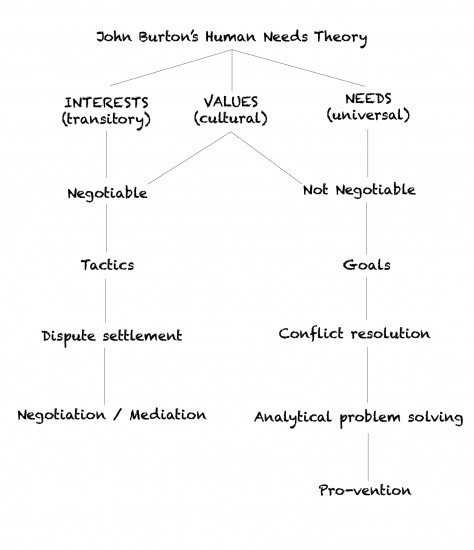
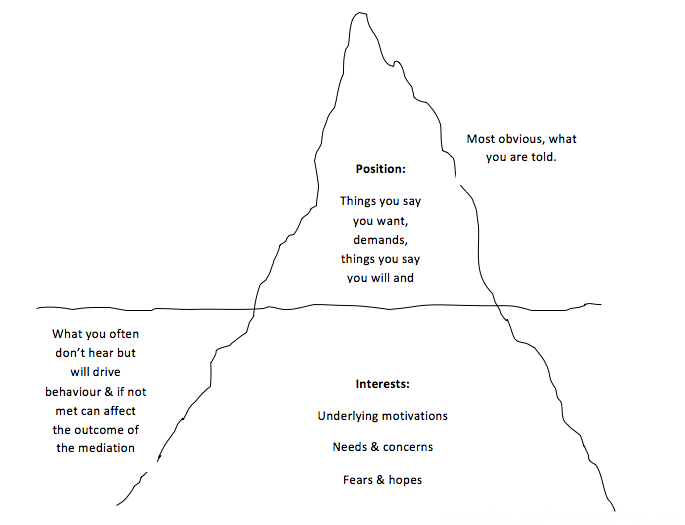










































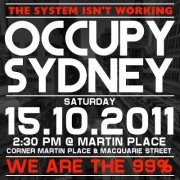
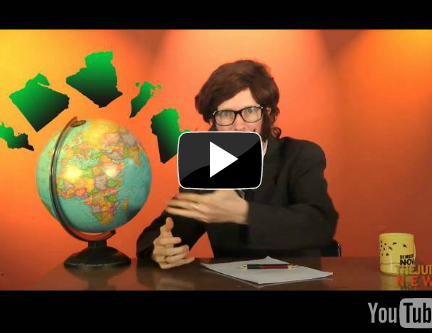

 Peace requires a delicate brew of justice, equality and compassion, and what makes it such a tenuous, ethereal concept is striking the proper balance. Although her talk doesn’t much center around politics and economics, but rather religion and the concept of “compassion fatigue,” what Rabbi Jackie Tabick has to say on the matter will still resonate with peace studies students all the same. “You have to, of course, be aware of the needs of others, but you have to be aware in such a way that you can carry on with your life and be of help to people,” she warns — certainly a credo all compassionate, loving people should consider, albeit one difficult to fully implement.
Peace requires a delicate brew of justice, equality and compassion, and what makes it such a tenuous, ethereal concept is striking the proper balance. Although her talk doesn’t much center around politics and economics, but rather religion and the concept of “compassion fatigue,” what Rabbi Jackie Tabick has to say on the matter will still resonate with peace studies students all the same. “You have to, of course, be aware of the needs of others, but you have to be aware in such a way that you can carry on with your life and be of help to people,” she warns — certainly a credo all compassionate, loving people should consider, albeit one difficult to fully implement.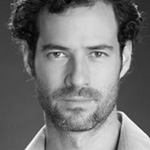 Former Mexican president Carlos Salinas de Gortari’s son Emiliano Salinas very bluntly addresses the violence currently ripping his nation apart — but what he has to can easily apply to different regions and historical periods. Despite his privilege, the speaker expresses genuine concern over Mexico’s descent into violence and drug from a citizen’s perspective, admitting that doing so might very well incite controversy. Salinas’ main thrust involves chastising apathy, because he believes succumbing to fear and perceiving the innocent as “victims of circumstance” allow injustices to keep happening.
Former Mexican president Carlos Salinas de Gortari’s son Emiliano Salinas very bluntly addresses the violence currently ripping his nation apart — but what he has to can easily apply to different regions and historical periods. Despite his privilege, the speaker expresses genuine concern over Mexico’s descent into violence and drug from a citizen’s perspective, admitting that doing so might very well incite controversy. Salinas’ main thrust involves chastising apathy, because he believes succumbing to fear and perceiving the innocent as “victims of circumstance” allow injustices to keep happening. Humanity will never enjoy lasting peace until the basic needs of all people can be met, and nothing illustrates this disparity like obesity issues in developed nations and starvation in their less fortunate counterparts. Ellen Gustafson’s 30 Project hopes to close this gap over the next three decades by altering agriculture itself, namely exporting technology as well as foodstuffs. Having worked with the United Nations World Food Programme, she knows firsthand exactly how both hunger and overconsumption problems burst into existence.
Humanity will never enjoy lasting peace until the basic needs of all people can be met, and nothing illustrates this disparity like obesity issues in developed nations and starvation in their less fortunate counterparts. Ellen Gustafson’s 30 Project hopes to close this gap over the next three decades by altering agriculture itself, namely exporting technology as well as foodstuffs. Having worked with the United Nations World Food Programme, she knows firsthand exactly how both hunger and overconsumption problems burst into existence. As the instigator behind the infamous (and still-controversial) Stanford Prison Experiment, the former American Psychological Association president intimately understands how high-pressure circumstances try individuals and force them into brash actions. Here, Philip Zimbardo talks about his book The Lucifer Effect and the Abu Ghraib prison scandal, for which he served as an expert witness once it went to trial. The lecture itself, however, isn’t really about jail reform, but rather the intense psychology behind individuals choosing between perpetuating justice and injustice — a topic all peace students and activists must absolutely understand if they hope to instill permanent positive change.
As the instigator behind the infamous (and still-controversial) Stanford Prison Experiment, the former American Psychological Association president intimately understands how high-pressure circumstances try individuals and force them into brash actions. Here, Philip Zimbardo talks about his book The Lucifer Effect and the Abu Ghraib prison scandal, for which he served as an expert witness once it went to trial. The lecture itself, however, isn’t really about jail reform, but rather the intense psychology behind individuals choosing between perpetuating justice and injustice — a topic all peace students and activists must absolutely understand if they hope to instill permanent positive change.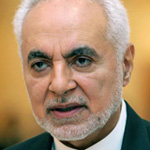 Muslim (or even religious) or not, Imam Faisal Abdul Rauf’s coaxing towards global understanding and heightened communication applies to pretty much everyone. He uses his faith as an example of how he understands compassion, but the Qur’an’s teachings extend beyond the boundaries of Islam and frequently parallel those found in Christianity, Buddhism and plenty others. At its core, he touts, the universal message discourages self-centeredness and believes overarching, selfless love stems directly from sloughing off arrogance — a statement even the most ardent atheist can find agreeable.
Muslim (or even religious) or not, Imam Faisal Abdul Rauf’s coaxing towards global understanding and heightened communication applies to pretty much everyone. He uses his faith as an example of how he understands compassion, but the Qur’an’s teachings extend beyond the boundaries of Islam and frequently parallel those found in Christianity, Buddhism and plenty others. At its core, he touts, the universal message discourages self-centeredness and believes overarching, selfless love stems directly from sloughing off arrogance — a statement even the most ardent atheist can find agreeable.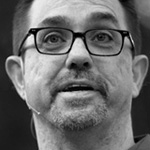 When most people speak of peace, lofty images of eradicating war, famine, pestilence, needless death and other ills typically emerge in the populaces’ mind — but the idea requires application on a micro level to survive as well. Even in the most boastfully “equal” and “enlightened” societies, the mentally ill (most especially the suicidal and suicide survivors) still suffer beneath marginalization and stigmatization. In less than four and a half minutes, business and communications expert JD Schramm illustrates one way to make the world a better place right here at home; not to mention how serious issues don’t always inspire external manifestations.
When most people speak of peace, lofty images of eradicating war, famine, pestilence, needless death and other ills typically emerge in the populaces’ mind — but the idea requires application on a micro level to survive as well. Even in the most boastfully “equal” and “enlightened” societies, the mentally ill (most especially the suicidal and suicide survivors) still suffer beneath marginalization and stigmatization. In less than four and a half minutes, business and communications expert JD Schramm illustrates one way to make the world a better place right here at home; not to mention how serious issues don’t always inspire external manifestations. Lasting peace is totally useless its core components never end up in the minds of succeeding generations, and teaching it helps reinforce teachers and students alike. John Hunter’s students play the World Peace Game, where global problems loom on a plywood board, by formulating creative — sometimes even viable! — solutions. He believes their approach, as well as the lessons gleaned during engagement, could very well benefit them (and maybe even the world) for life.
Lasting peace is totally useless its core components never end up in the minds of succeeding generations, and teaching it helps reinforce teachers and students alike. John Hunter’s students play the World Peace Game, where global problems loom on a plywood board, by formulating creative — sometimes even viable! — solutions. He believes their approach, as well as the lessons gleaned during engagement, could very well benefit them (and maybe even the world) for life.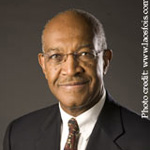 One thing activists and students must absolutely understand is that their goals don’t have to necessarily benefit millions (if not billions) right off the bat. Like Rev. James Forbes elucidates, simple, neighborly lessons his parents instilled in him over regular family dinners possessed a right fair amount of resonance. All it takes is a show of love, support and selflessness to inspire others — who, in turn, inspire others. Who inspire others. And so forth. Initiating many ripple effects instead of aiming for one giant display might very well be what it takes to change things for the better.
One thing activists and students must absolutely understand is that their goals don’t have to necessarily benefit millions (if not billions) right off the bat. Like Rev. James Forbes elucidates, simple, neighborly lessons his parents instilled in him over regular family dinners possessed a right fair amount of resonance. All it takes is a show of love, support and selflessness to inspire others — who, in turn, inspire others. Who inspire others. And so forth. Initiating many ripple effects instead of aiming for one giant display might very well be what it takes to change things for the better. Merely touting an event or a protest as “for world peace” doesn’t exactly put an end to violent conflict — participants must engage themselves to the fullest extent personally possible and coagulate specific goals with specific solutions and specific projected outcomes. This Nobel Peace Prize Winner knows that peace requires sustainability, justice, security and equality in order to mean anything, and her TED Talk showcases some amazing women fighting for all four elements. Check out Jody Williams’ particularly inspiring favorites when looking to formulate projects sporting solid structures and more permanent results.
Merely touting an event or a protest as “for world peace” doesn’t exactly put an end to violent conflict — participants must engage themselves to the fullest extent personally possible and coagulate specific goals with specific solutions and specific projected outcomes. This Nobel Peace Prize Winner knows that peace requires sustainability, justice, security and equality in order to mean anything, and her TED Talk showcases some amazing women fighting for all four elements. Check out Jody Williams’ particularly inspiring favorites when looking to formulate projects sporting solid structures and more permanent results.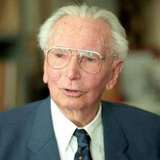 TED sometimes posts historical video footage of political, academic and/or social significance for its viewer’s intellectual stimulation; this small-but-piquant talk by pioneering psychologist Viktor Frankl is absolutely essential viewing for many different majors. As a Holocaust survivor, he found himself particularly fascinated by how humans make decisions to create meaning in their own lives, the lives of others and the positive and negative impacts of both. Some might dismiss Frankl’s views as too idealistic for these cynical times, but he still earnestly believed that love begins with trust, understanding and mutually beneficial exchange…and from there, peace.
TED sometimes posts historical video footage of political, academic and/or social significance for its viewer’s intellectual stimulation; this small-but-piquant talk by pioneering psychologist Viktor Frankl is absolutely essential viewing for many different majors. As a Holocaust survivor, he found himself particularly fascinated by how humans make decisions to create meaning in their own lives, the lives of others and the positive and negative impacts of both. Some might dismiss Frankl’s views as too idealistic for these cynical times, but he still earnestly believed that love begins with trust, understanding and mutually beneficial exchange…and from there, peace. Bribery and underhanded bureaucracy stand as probably the most major roadblocks to national and international peace, with sociopathic authority figures supposedly for the people looking out for their own self-interest. With a bit of entrepreneurial spirit and cunning, it might very well be possible to start chipping away at this unfortunate phenomenon and dispense real justice. Shaffi Mather wants to do just that, dissecting the “supply and demand” economy of bribery and formulating plans turning its very structure against itself.
Bribery and underhanded bureaucracy stand as probably the most major roadblocks to national and international peace, with sociopathic authority figures supposedly for the people looking out for their own self-interest. With a bit of entrepreneurial spirit and cunning, it might very well be possible to start chipping away at this unfortunate phenomenon and dispense real justice. Shaffi Mather wants to do just that, dissecting the “supply and demand” economy of bribery and formulating plans turning its very structure against itself. Peace studies students (especially those hoping to explore the subject from a geopolitical angle) should understand how hegemonic power theory works, which former Assistant Secretary of Defense Joseph Nye explains here. Pulling directly from human history and using today’s rivalry between the United States and China as an example, he spends nearly 20 minutes explaining the concept. Such massive conflicts obviously challenge international relations and human rights — factors which can easily escalate into violence and other ills — and warrant considerable research to prevent something horrible.
Peace studies students (especially those hoping to explore the subject from a geopolitical angle) should understand how hegemonic power theory works, which former Assistant Secretary of Defense Joseph Nye explains here. Pulling directly from human history and using today’s rivalry between the United States and China as an example, he spends nearly 20 minutes explaining the concept. Such massive conflicts obviously challenge international relations and human rights — factors which can easily escalate into violence and other ills — and warrant considerable research to prevent something horrible. Jessica Jackley co-founded Kiva.org to provide the impoverished worldwide with “microloans” earmarked for creating economic opportunities and accomplishing professional and personal dreams. Her TED Talk shares some of the stories and people who inspired her before, during and after the nonprofit’s launch — and, of course, some great anecdotes about some of its successes! As its simple title states, everything Jackley has to say revolves around the intersection of love, compassion and charity with the hope of accomplishing lasting goals.
Jessica Jackley co-founded Kiva.org to provide the impoverished worldwide with “microloans” earmarked for creating economic opportunities and accomplishing professional and personal dreams. Her TED Talk shares some of the stories and people who inspired her before, during and after the nonprofit’s launch — and, of course, some great anecdotes about some of its successes! As its simple title states, everything Jackley has to say revolves around the intersection of love, compassion and charity with the hope of accomplishing lasting goals. Although immediate (or near-immediate) access to news sources make it seem like civil wars, genocide and other ills stemming from ethnic conflict are at an all-time high, Stefan Wolff’s statistics say otherwise. In fact, he’s noted a 10% decrease in the number of civil wars and civilian casualties between the 1990s and the 2000s’ first decade — but that doesn’t mean humanity should settle and start cheering just yet. Juxtaposing “good news” with the horrific, Wolff notes that the decline contains some exceptionally valuable lessons on how to maybe keep the numbers (very) slowly lowering over time to nurture a more sustainable, nonviolent end.
Although immediate (or near-immediate) access to news sources make it seem like civil wars, genocide and other ills stemming from ethnic conflict are at an all-time high, Stefan Wolff’s statistics say otherwise. In fact, he’s noted a 10% decrease in the number of civil wars and civilian casualties between the 1990s and the 2000s’ first decade — but that doesn’t mean humanity should settle and start cheering just yet. Juxtaposing “good news” with the horrific, Wolff notes that the decline contains some exceptionally valuable lessons on how to maybe keep the numbers (very) slowly lowering over time to nurture a more sustainable, nonviolent end. No matter a student’s major, if he or she desires to change the world and bring about justice, equality and peace, different tools, techniques and recourses are absolutely necessary. Creativity counts for a lot, of course, but WorldChanging.com co-founder Jamais Cascio highlights some of what burgeoning (and even seasoned) activists will need if they desire viable results. Although he doesn’t cover all of them at TED, he estimates that the number sits in the 4,000 range and fascinatingly discusses some of their commonalities.
No matter a student’s major, if he or she desires to change the world and bring about justice, equality and peace, different tools, techniques and recourses are absolutely necessary. Creativity counts for a lot, of course, but WorldChanging.com co-founder Jamais Cascio highlights some of what burgeoning (and even seasoned) activists will need if they desire viable results. Although he doesn’t cover all of them at TED, he estimates that the number sits in the 4,000 range and fascinatingly discusses some of their commonalities. It doesn’t take Thomas Barnett’s extensive defense strategy experience to understand all too well how drawing boundary lines can quickly escalate into some seriously nasty violence. But it takes Thomas Barnett’s extensive defense strategy experience to understand exactly how the governments and civilizations concerned might consider laying them out for maximum peace. His TED Talk covers an impressively wide breadth of relevant military and geopolitical topics, and the undeniable highlight revolves around an ingenious post-Cold War map that pleases more than it piques.
It doesn’t take Thomas Barnett’s extensive defense strategy experience to understand all too well how drawing boundary lines can quickly escalate into some seriously nasty violence. But it takes Thomas Barnett’s extensive defense strategy experience to understand exactly how the governments and civilizations concerned might consider laying them out for maximum peace. His TED Talk covers an impressively wide breadth of relevant military and geopolitical topics, and the undeniable highlight revolves around an ingenious post-Cold War map that pleases more than it piques. Billions of dollars filter into sexual slavery rings annually — a despicable black market trade exploiting women (even children) worldwide that promotes violence, abuse of all types, horrific human rights violations and obviously stands as a major threat to global harmony. Despite grossly unfair shaming and stigma, Sunitha Krishnan has come out as a former victim and works closely with governments, nonprofits and other organizations to stop others from suffering as she once did. Human trafficking, particularly of the sexual variety, remains an unfortunately overlooked social justice issue, and the world cannot experience true peace if it is allowed to continue.
Billions of dollars filter into sexual slavery rings annually — a despicable black market trade exploiting women (even children) worldwide that promotes violence, abuse of all types, horrific human rights violations and obviously stands as a major threat to global harmony. Despite grossly unfair shaming and stigma, Sunitha Krishnan has come out as a former victim and works closely with governments, nonprofits and other organizations to stop others from suffering as she once did. Human trafficking, particularly of the sexual variety, remains an unfortunately overlooked social justice issue, and the world cannot experience true peace if it is allowed to continue. When looking at facilitating peace on a smaller scale than “THE WHOLE WIDE WORLD,” some students might want to look into prison rehabilitation and reform — and Kiran Bedi makes for an excellent inspiration. It’s true that not everyone can be saved, but this tough-as-nails former prison manager and current Director General of the Indian Police Service definitely found an intriguing way to reach out to the incarcerated. “With community support,” she provided prisoners with educational (even religious) resources and approached them with equal parts compassion and steely determination — a mindset that ended up producing some almost miraculous positive results.
When looking at facilitating peace on a smaller scale than “THE WHOLE WIDE WORLD,” some students might want to look into prison rehabilitation and reform — and Kiran Bedi makes for an excellent inspiration. It’s true that not everyone can be saved, but this tough-as-nails former prison manager and current Director General of the Indian Police Service definitely found an intriguing way to reach out to the incarcerated. “With community support,” she provided prisoners with educational (even religious) resources and approached them with equal parts compassion and steely determination — a mindset that ended up producing some almost miraculous positive results. Economic justice often walks hand-in-codependent-hand with social justice on the beach at sunset, so deploying one frequently means acknowledging and nurturing the other. Peace studies majors interested in worker’s rights and labor issues are undoubtedly familiar with the fair trade movement, which ensures First World luxuries didn’t pop into existence thanks to Third World exploitation. Auret van Heerden talks frankly about how governments must play a more prominent role in only exporting and importing goods made entirely sans human rights violations — and believes consumers themselves should start caring as well..
Economic justice often walks hand-in-codependent-hand with social justice on the beach at sunset, so deploying one frequently means acknowledging and nurturing the other. Peace studies majors interested in worker’s rights and labor issues are undoubtedly familiar with the fair trade movement, which ensures First World luxuries didn’t pop into existence thanks to Third World exploitation. Auret van Heerden talks frankly about how governments must play a more prominent role in only exporting and importing goods made entirely sans human rights violations — and believes consumers themselves should start caring as well.. While not a TED Talk, obviously, the site hosts a link to this essential historical moment for anyone hoping to relive it or watch for the very first time. Civil Rights activist Dr. Martin Luther King, Jr. didn’t invent the concept of nonviolent resistance to social injustice, but he definitely spearheaded one of the world’s most influential applications. Demographics far, far beyond peace studies students will definitely find his most famous speech a riveting, inspiring clarion call for equality and an end to violent conflict.
While not a TED Talk, obviously, the site hosts a link to this essential historical moment for anyone hoping to relive it or watch for the very first time. Civil Rights activist Dr. Martin Luther King, Jr. didn’t invent the concept of nonviolent resistance to social injustice, but he definitely spearheaded one of the world’s most influential applications. Demographics far, far beyond peace studies students will definitely find his most famous speech a riveting, inspiring clarion call for equality and an end to violent conflict.